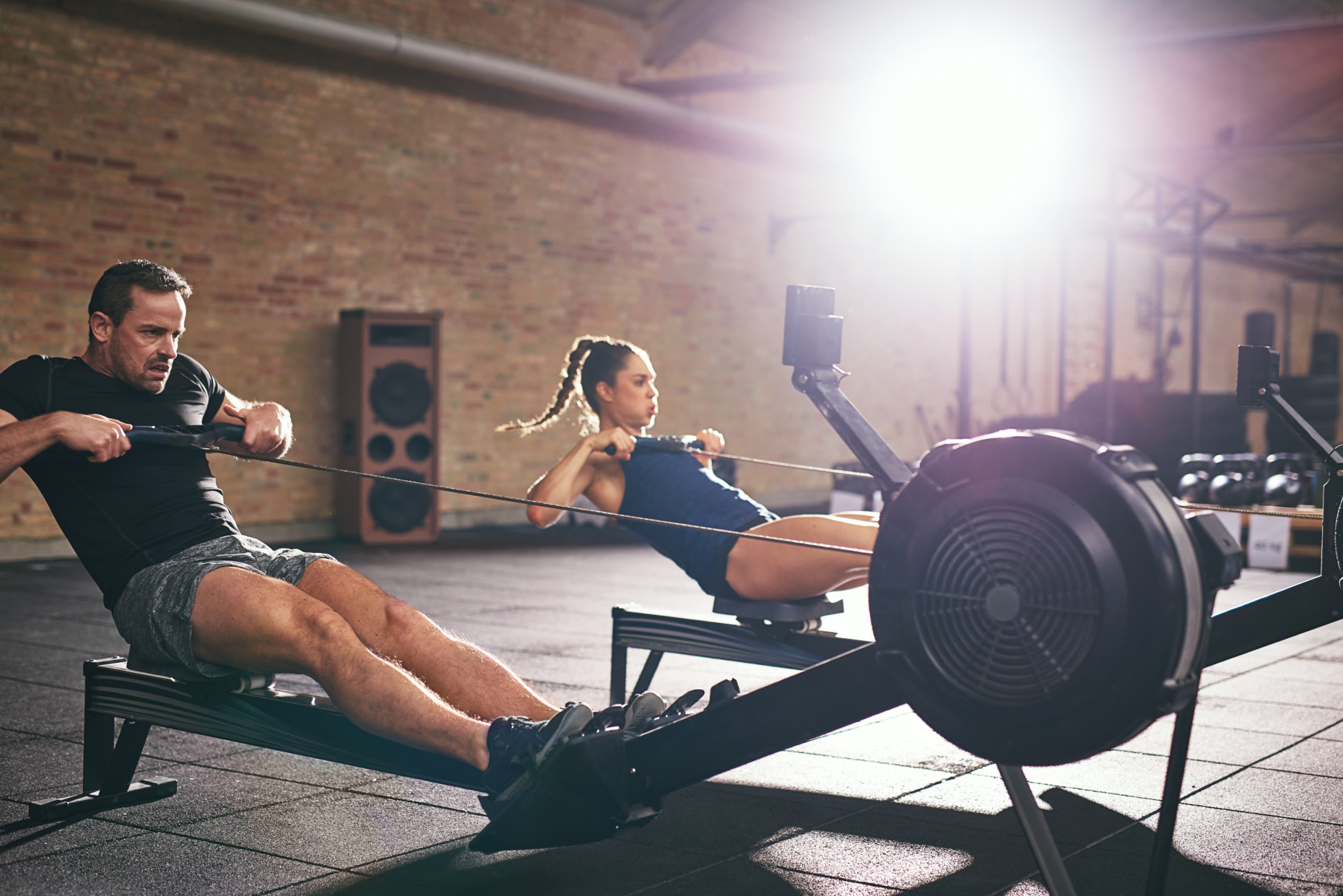At 93 years old this Golden Ager is a 4-time world champion in indoor rowing, he has the aerobic makings of a healthy 40-year-old and minimal body fat, making him an ideal subject for a new case study that was published in the Journal of Applied Physiology investigating his physiology, training, and diet.
In some ways Richard is ordinary, a former baker and battery maker with aches and pains who didn’t begin exercising regularly until his 70s and still prefers to train in his backyard shed. However, the results of the study suggest that in many ways this very healthy nonagenarian is very different, having the muscles, lungs, and heart equivalent to someone less than half of his age.
Despite not starting his exercising routine until he was in his 70s, it is estimated that Richard has now rowed the equivalent of close to 10 times around the distance of the globe, and he has won 4 world championships. This made researchers very curious as to what his late-life fitness routine was doing for his aging body.
“We need to look at very active older people if we want to understand aging,” said Bas Van Hooren, a doctoral researcher at Maastricht University in the Netherlands and one of the study’s authors.
Many questions still remain unanswered surrounding the biology of aging, and whether the physical slowing and decline in muscle mass are normal and/or inevitable or due in part due to lack of physical exercise. Research suggests that if some people stay fit, strong, healthy, and active into their later years, the rest of us should be able to as well.
The researchers invited Morgan to the physiology lab at the University of Limerick in Ireland to learn more about him, measure his height, weight, and BMI, check his metabolism, heart function, and lung function, as well as collect details about his lifestyle such as diet. Morgan was also asked to participate in a 2,000-meter time trial race on a rowing machine while his lungs, muscles and heart were being monitored.
This 165-pound lean machine proved to be an impressive powerhouse, according to the researchers, with his body being composed of around 80% muscle and less than 15% fat. This body composition is considered to be healthy for a man decades younger than Morgan. His heart rate peaked at 153 beats per minute during the time trial which is well above the expected maximum for someone his age, and is among the highest peaks recorded for someone in their 90s.
The results indicate that Morgan has a very strong heart, revealing that his heart rate climbed to the peak very quickly showing that his heart was able to rapidly supply working muscles with needed oxygen and fuel. This oxygen uptake kinetic is an important indicator of cardiovascular health, and Morgan’s is comparable to that of a healthy 30 or 40-year-old.
“It was one of the most inspiring days I’ve ever spent in the lab,” said Philip Jakeman, a professor of healthy aging, physical performance, and nutrition at the University of Limerick and the study’s senior author. Adding that Morgan’s ability suggests that we don’t have to lose muscle and aerobic capacity as we age, exercising regularly can help us build/maintain a strong and capable body at any age.
“This is an interesting case study that sheds light on our understanding of exercise adaptation across the life span,” said Scott Trappe, director of the Human Performance Laboratory at Ball State University in Indiana. He has studied many older athletes but was not involved in the new study. “We are still learning about starting a late-life exercise program,” he added, “but the evidence is pretty clear that the human body maintains the ability to adapt to exercise at any age.”
Morgan may have some genetic advantages as rowing prowess runs in his family, but that does not take away from the significance of the abilities that he has achieved. In recent years his race performances have been slower than what they were 10-15 years ago because exercise can’t completely erase aging. The results from the study show that while aging can not be avoided, exercise helps to slow our body’s losses, and it may help to flatten the decline.
Morgan achieved his amazing results and impressive physical fitness with a simple exercise routine:
- He consistently rows around 30 km/18.5 miles a week, averaging 40 minutes every day
- He mixes intensities of easy, moderate, and intense training with 70% of the workouts being easy, 20% difficult but tolerable, and 10% at an all-out hard-to-sustain intensity.
- 2-3 times a week he weight trains using adjustable dumbbells for 3 sets of lunges and curls, repeating each move until his muscles are too tired to continue.
- He follows a high-protein diet, regularly exceeding the recommended protein intake for a person of his weight.
“There is a certain pleasure in achieving a world championship,” Morgan said. “I started from nowhere,” he said, “and I suddenly realized there was a lot of pleasure in doing this.”
Video of Richard Morgan at 84 years old: https://www.youtube.com/watch?v=uUW4nhKfrIA
As with anything you read on the internet, this article should not be construed as medical advice; please talk to your doctor or primary care provider before changing your wellness routine. This article is not intended to provide a medical diagnosis, recommendation, treatment, or endorsement. These statements have not been evaluated by the Food and Drug Administration.
Content may be edited for style and length.
References/Sources/Materials provided by:
T.W. at WHN
https://www.youtube.com/watch?v=uUW4nhKfrIA
https://www.businessinsider.com/longevity-tips-older-athlete-exercise-diet-2024-1
https://www.washingtonpost.com/wellness/2024/01/16/fitness-aging-richard-morgan/
https://journals.physiology.org/doi/abs/10.1152/japplphysiol.00698.2023




